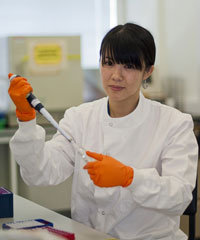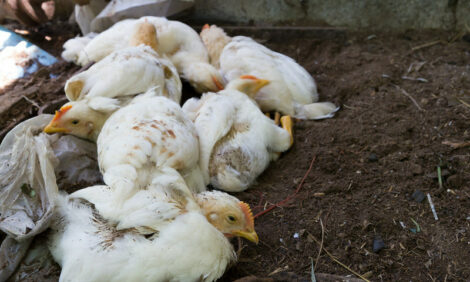



Exposure to Stomach Acid Primes Campylobacter
UK - Campylobacter is a major cause of foodborne gastroenteritis, with an estimated 500,000 infections annually in the UK. The most common infection route is on undercooked poultry meat, with the bacteria then crossing the lining of the small intestine. To do this, the bugs must survive the highly acidic conditions in the stomach, and then find a way of getting into the cells that line the small intestine.
New research at the Institute of Food Research, which receives strategic funding from BBSRC, from the teams of Dr Arnoud van Vliet and Professor Simon Carding shows that not only does Campylobacter have ways of surviving acid shock, it can also respond and adapt to the acidic environment making it better able to colonise the intestine and enter host cells there.
This research highlights how well Campylobacter is adapted to infect humans, knowledge that could help scientists achieve the ultimate goal of reducing its impact in the food industry.
In the acidic environment in the stomach, the pH can range from approximately 2 to 7, and food can be retained for up to an hour. Bacteria like E. coli, which are resident in our digestive system, have developed specific acid-resistance systems which Campylobacter doesn't appear to have, so how it copes with these stressful conditions on entering the stomach is not well understood. To learn more about how Campylobacter reacts to the sudden change in acidity, post graduate student Thanh Le and colleagues have identified which genes are turned on or off by acid shock.
They found that Campylobacter down regulates the activity of genes relating to metabolism and cell division, but up regulates the activity of a set of genes needed to make flagella, the hair-like structures that bacteria use for movement. These changes in gene expression suggest that in addition to slowing down normal cellular processes, acid shock also triggers Campylobacter to become more motile.
As motility and host cell invasion are known to be linked, Le studied how well acid-shocked Campylobacter invaded epithelium obtained from the mouse gut. In this cell model system, the acid shocked Campylobacter were better than unprepared Campylobacter at invading and subsequently getting across this cell layer, two processes essential for disease.
More work is needed to fully understand the mechanism of cell invasion, and how Campylobacter initially senses high acidity is still unknown. But the link between acid shock and increased invasion in Campylobacter highlights how well this dangerous pathogen has adapted to the human host, and such knowledge may help in achieving the ultimate goal of reducing its impact in the food industry.









